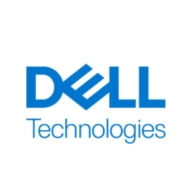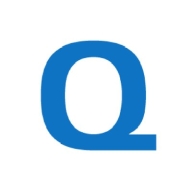

Dell PowerProtect Data Domain and Quantum DXi Series compete in data storage and protection. Dell PowerProtect Data Domain has an advantage in support and setup costs, while Quantum DXi offers robust features appealing to those seeking comprehensive capabilities despite higher costs.
Features: Dell PowerProtect Data Domain offers efficient deduplication, scalability, and seamless integration with VMware environments. Quantum DXi Series provides powerful data backup capabilities, strong data deduplication, and advanced recovery options.
Ease of Deployment and Customer Service: Dell PowerProtect Data Domain is known for straightforward deployment and responsive customer support, enhancing user experience. Quantum DXi Series, while robust, demands more initial setup effort and complexity in troubleshooting, making Dell's service more favorable.
Pricing and ROI: Dell PowerProtect Data Domain presents a cost-effective setup with a favorable ROI due to its efficient resource utilization. In contrast, Quantum DXi Series, though pricier, delivers substantial ROI through its extensive feature set, appealing to those prioritizing advanced functionalities.
| Product | Market Share (%) |
|---|---|
| Dell PowerProtect DD (Data Domain) | 26.6% |
| Quantum DXi Series | 4.2% |
| Other | 69.2% |


| Company Size | Count |
|---|---|
| Small Business | 32 |
| Midsize Enterprise | 21 |
| Large Enterprise | 32 |
Dell PowerProtect Data Domain ranks as the #1 Purpose-Built Backup Appliance. Known for its exceptional cyber resilience, it integrates well into any size organization's on-premises environment, optimizing data protection for traditional and modern workloads like AI and containers.
Dell PowerProtect Data Domain stands out with its patented data services, providing powerful protection and operational simplicity. By enabling seamless integration with a wide range of backup applications, it ensures efficient data management. Its flash and disk-based appliances support cost-effective operations with secure storage capabilities. Along with integration with cloud services, it assures excellent data handling and recovery performance for enterprises.
What are the key features of Dell PowerProtect Data Domain?Organizations across the financial, enterprise, and governmental sectors leverage Dell PowerProtect Data Domain for secure data backup and deduplication. It is essential in environments requiring data archiving and critical workload protection. With applications like Veeam, NetWorker, and Avamar, these appliances support both on-premises and cloud deployments, ensuring business continuity through effective disaster recovery strategies.
Quantum's DXi series deduplication solutions provides patented variable-length deduplication that not only reduces disk usage and capital expenditures, but also enables efficient data movement across the WAN to other sites and to the cloud.
We monitor all Deduplication Software reviews to prevent fraudulent reviews and keep review quality high. We do not post reviews by company employees or direct competitors. We validate each review for authenticity via cross-reference with LinkedIn, and personal follow-up with the reviewer when necessary.